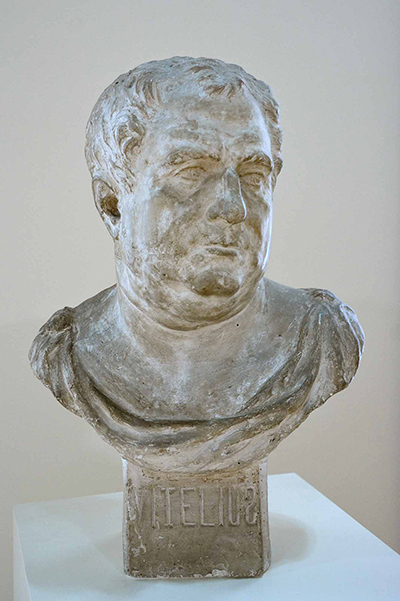Constantin Brancusi studied at the School of Arts and Crafts starting in 1895. It was during his studies in Craiova that the Romanian artist created one of his first recognised works. Using a small local grant, he sculpted the bust of Aulus Vitellius.
Viltellius was Roman Emperor for only eight months in 69 AD. Brancusi's sculpture of the Emperor is similar to others in appearance, include one housed in the Louvre created during the 16th century, which itself was a copy of a sculpture created during the Hadrianic era that is found in the Grimani Collection in Venice thought to be of Vitellius.
Created in 1898, the bust of Vitellius features a mature man. Reflecting the more realistic representation of people from classic sculptures, the rounded face features a thick neck and short wavy hair. His head is turned slightly over his shoulder and is wearing a gown. The head of the Roman emperor created by Brancusi evokes the feeling of an antique sculpture but applies a unique style. It also represents the artist’s early style, which was heavily influenced by classic representations of the human form.
The inscription features the subject's name, although the last letter is an inverted 'S'. There are other imperfections in the work, including from the casting and carving. Throughout the surface there are subtle imperfections, particularly over the face. For example, there is a small triangular shape on the right shoulder and a square on the back hairline likely created from chunks of metal. There is a scratch on the right cheek and others along the base. Other imperfections are seen throughout the sculpture created by handling the piece without gloves and a result from significant dusting during the creation of the piece. The less than perfect finish represents the artist’s early years and his search for modelling techniques and material choices.
The bust of Vitellius is also one of the few remaining pieces from Brancusi's studies in Craiova. The sculpture and its acclaim provided the artist with additional opportunities, including grants that allowed him to move to Bucharest. In Romania's capital, Brancusi enrolled at the renowned School of Fine Arts. Housed at the Art Museum in Craiova, the sculpture was later part of various Brancusi Retrospectives in 1969 and 1970. It was showcased in New York City, Philadelphia, Chicago and The Hague. It was also highlighted at the Art Museum of Craiova's Brancusi Centenary in 1976.




